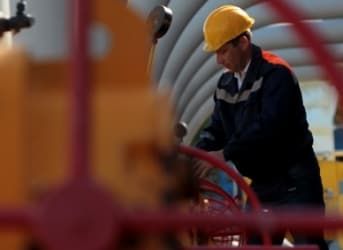The United States and Canada work well together. The countries share the world’s largest and most comprehensive trade relationship, exchanging more than $2 billion per day in goods and services; the U.S. is Canada’s largest foreign investor and Canada is the third-largest foreign investor in the U.S. The partnership clearly isn’t broken, but it may need some mending as bilateral and international gas trade stands to complicate matters in short order.
As with most current global natural gas issues, we must first look back to the shale gas revolution. In 2005 – just as hydraulic fracturing was finding its feet in the Barnett shale – piped supplies from Canada met nearly 17 percent of total U.S. natural gas demand. By year’s end 2015 – with U.S. production some 50 percent higher – imports from Canada dipped below 10 percent of consumption.
For Canadian producers, rising U.S. production is just one of a series of issues in what is a multifaceted and evolving problem: they struggle to compete. Of course, the resulting, and thus far persistent low prices are another. Canadian natural gas deliverability has taken a large hit as prices have moved below the supply cost of most new natural gas developments. Total production dipped slightly in 2015, though Alberta and British Columbia (BC) provinces – the Montney and Duvernay shales – proved resilient. Related: Oil Rally Unwinds Ahead Of Inventory Data
While non-core plays will continue to struggle, the NGL-rich and relatively low-cost gas from the Montney looks to drive a rebound in 2016. Led by Petronas (Progress Energy Canada), Canadian Natural Resources, ARC Resources, and Encana as well as smaller-cap producers like Painted Pony Petroleum, marketed production from Alberta and BC is projected to grow approximately 2 and 6 percent respectively this year. Across all provinces and territories, Canadian production is slated to rise nearly 2.5 percent, to just over 15.3 billion cubic feet per day (Bcf/d).
For its part, U.S. producers have their own Montney – or six. The colossal Marcellus shale, which stretches across much of the Appalachian Basin, outputs more than 17.3 Bcf/d and counting. The neighboring Utica shale is no slouch either; production is up to 3.6 Bcf/d, 88 percent higher than a year ago. What’s more, they’re moving north. Related: Which Energy Companies Are Most At Risk From The Spring Redetermination?
Positioned mere miles away from Canada’s hungrier eastern markets, cheap gas from the Marcellus and Utica shales is increasingly replacing supplies from Western Canada. Gas shipments to eastern Canada from western Canadian drillers are down more than 50 percent since 2005; U.S. cargoes have doubled in that time. Over the next decade, the flow is likely to more than double again.
Spectra Energy’s Atlantic Bridge and NEXUS projects will soon (2017) deliver over 1.6 Bcf/d of U.S. shale to high-demand markets including Chicago, Ohio, New England, Ontario, and Atlantic Canada. TransCanada’s South-to-North project plans to reverse the flow of the Iroquois line by late-2017, sending 0.65 Bcf/d to Canada’s eastern provinces. Energy Transfer’s $4.2 billion Rover pipeline will carry 3.25 Bcf/d of Marcellus and Utica gas through the Midwest to Enbridge and DTE’s Vector pipeline, where it will cross the border into Ontario. Related:Will Weak Fundamentals Force Saudis To Action
With its domestic eastern and U.S. Midwest markets shrinking or altogether disappearing, Canada’s slow-footed attempts to join the growing ranks of LNG exporters are all the more damaging. Canada’s federal government recently further delayed its decision on the $36 billion Pacific Northwest LNG facility. The Petronas project – while not alone – is make or break for Canada’s LNG hopes; prospective Asian buyers are running short on patience, and high on options.
‘Gas war’ is perhaps a misnomer – interconnectivity is increasing and the U.S. stands to remain a net importer of Canadian gas through 2040 – but continental and international competition will certainly re-characterize what was a largely humdrum relationship.
By Colin Chilcoat of Oilprice.com
ADVERTISEMENT
More Top Reads From Oilprice.com:
- Does Saudi Arabia’s Play For Market Share Make Sense?
- Even Utilities Are Starting To Get Behind Community Solar
- Low Oil Prices Forcing Saudi Arabia To Modernize Economy


















